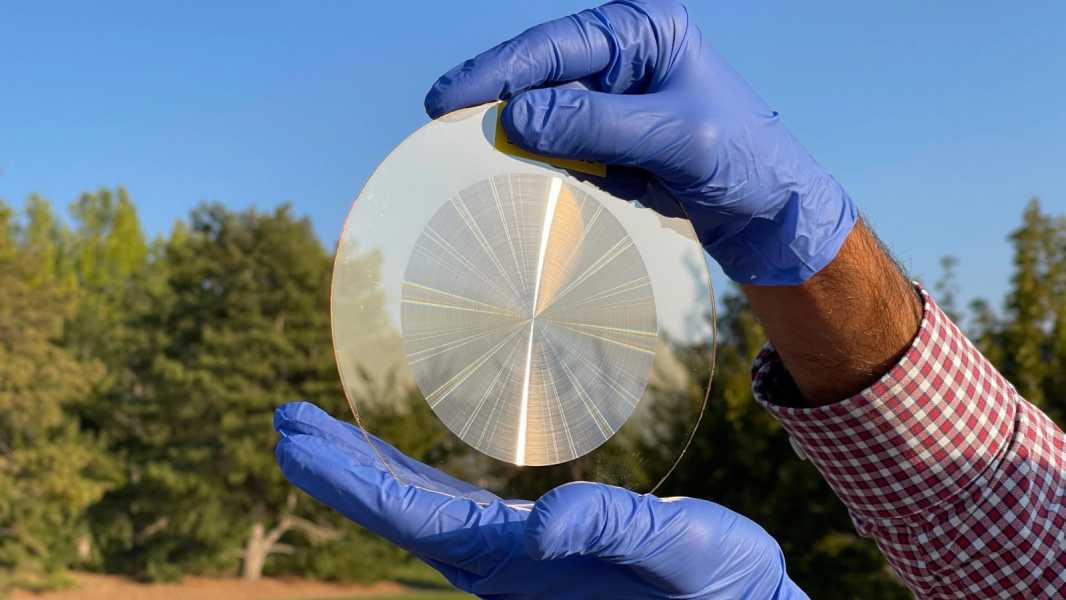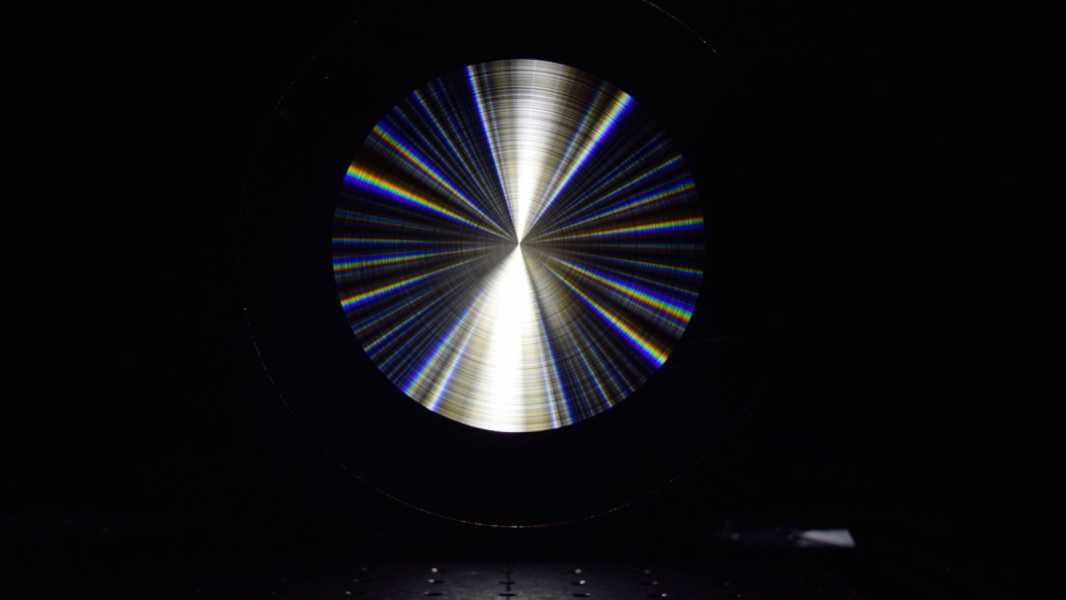
(Image credit: Menon Lab/University of Utah)
A new type of flat, ultra-thin telescope lens could revolutionise the way we observe stars in deep space, researchers say, allowing lightweight but efficient telescopes to be mounted on planes and satellites.
Refracting telescopes typically use curved lenses to magnify distant objects using a process known as refraction. Like magnifying glasses, curved lenses bend light and direct it toward a focal point, making objects appear larger.
However, traditional lenses are becoming less and less practical for space telescopes that study stars or galaxies millions of light years away. This is because the further away the object is, the greater the magnification needed to focus, meaning the lens needs to be thicker and heavier.
So scientists began looking at flat lenses, which theoretically should be lighter and less bulky. The problem, however, is that light interacts with them differently than with curved lenses.
Visible light is a type of electromagnetic radiation that travels in waves or particles at various wavelengths and frequencies. When light passes through a flat lens, it diffracts, scattering the wavelengths in different directions, resulting in blurry, out-of-focus images.
However, the new “multi-level diffractive lens” (MLDL) developed by the scientists has a multi-level structure consisting of “microscopic concentric rings.” These rings effectively direct different wavelengths of light to the same focal point, creating a sharp, accurately colored image.
The new lens, measuring 100 mm (3.9 in) in diameter and 200 mm (7.8 in) in focal length, is only 2.4 micrometers thick and is optimized for wavelengths between 400 and 800 nm, making it significantly lighter than a traditional curved lens and eliminating color distortion.
The scientists published their results on February 3 in the journal Applied Physics Letters. The research was funded by the Defense Advanced Research Projects Agency (DARPA), NASA, and the Office of Naval Research.
“Our demonstration represents a step toward creating lightweight, flat lenses with very large apertures that can capture full-color images for use in airborne and space telescopes,” said lead study author Apratim Majumder, an assistant professor of electrical and computer engineering at the University of Utah.

Ahead of the curve
Researchers have worked on flat lenses in the past, notably with the Fresnel plate
Sourse: www.livescience.com





